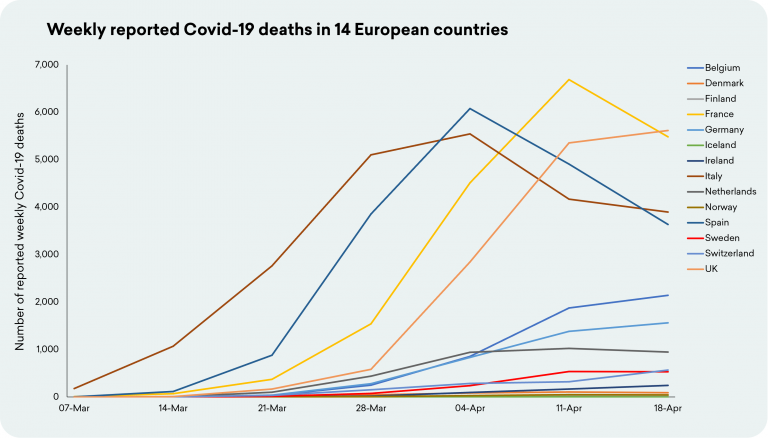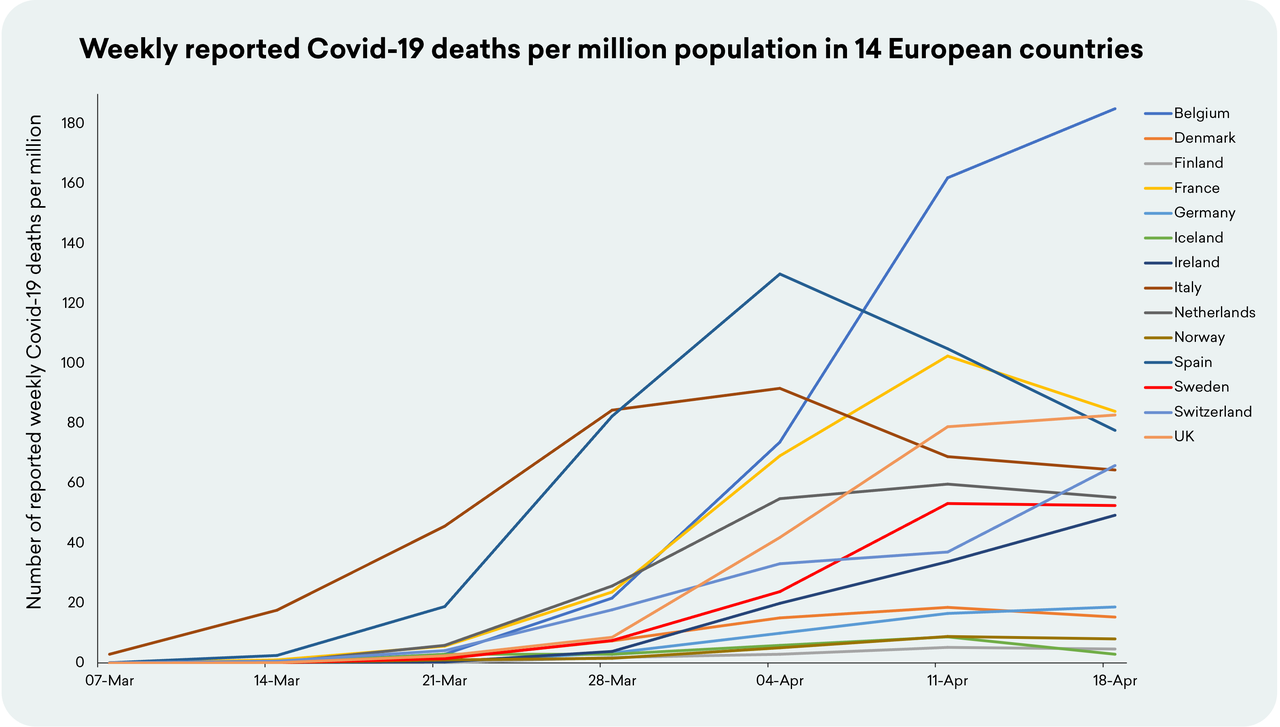Conceived in Liberty, Volume V: The New Republic, 1784–1791, by Murray N. Rothbard, Ludwig von Mises Institute, 332 pages, $45
The Constitution is traditionally seen as the culmination of the American Revolution. But in the fifth and final volume of Conceived in Liberty, the libertarian firebrand Murray Rothbard portrays it as a reactionary counterrevolution against the Revolution’s radical principles, orchestrated by a powerful array of monied interests who hoped a more centralized government would reproduce many hierarchical and mercantilist features of the 18th century British state.
The first volume of Conceived in Liberty was published in 1975, launching a lengthy history of America from the founding of the colonies to the adoption of the Constitution. Three more volumes came out in due course, but the fifth, which promised to explore the period from the end of the American Revolution to the Constitution’s ratification, never appeared. Rumors circulated that Arlington House, the conservative publisher of the first four volumes, was not happy with Rothbard’s critical approach to the Constitution. But the actual explanation is probably more mundane, since Arlington House went out of business in the early 1980s.
By the time of Rothbard’s death in 1995, any trace of the fifth volume was thought to be irretrievably lost. But an early manuscript copy, partly typed but mostly handwritten, ended up in the Mises Institute archives. Now the economic historian Patrick Newman has painstakingly deciphered Rothbard’s scrawl and shepherded the book into existence.
When the first volume of Conceived in Liberty came out, I was a graduate student, and my field at the time was colonial history. The volume’s 531 pages, written with the assistance of Leonard Liggio, covered the American colonies during the 17th century. I already knew a good bit about the subject. Yet I was amazed at its comprehension, its detail, and above all, its unique and revealing interpretations. The next three volumes maintained the same high standard.
Book five is not quite up to the earlier installments. How could it be? It does not have the thorough bibliographic essays that graced each of the previous volumes, although Newman has partly remedied this by supplementing Rothbard’s few footnotes with his own supporting references. Despite Rothbard’s reputation for being able to make his first draft his final draft, his earlier volumes definitely went through some editing by others. And the fact that Rothbard’s original manuscript for the fifth volume apparently dates back to 1966, well before the publication of any of the other installments, strongly suggests that, given the chance, he would have done much editing and expanding himself. (In the other volumes, he clearly consulted important sources that appeared only after 1966.) Finally, the fifth volume could have done without Andrew Napolitano’s fervid foreword, which will weaken the work’s appeal to a wider audience.
But the book is still vintage Rothbard. As in all of his historical writing, he starkly identifies those he considers heroes or villains. That sometimes leads to a lack of nuance, thanks to prose that understates or ignores his heroes’ flaws and his villains’ virtues. On the other hand, Rothbard’s partisanship helps to vividly capture the acrimonious sectarian and personal divisiveness of the period. It certainly serves as an antidote to the tendency of many other accounts to minimize these disputes and conflicts.
The first section of the book deals with the “critical period” following the American Revolution. Rothbard quickly disposes of the common belief that the U.S.’s postwar economic hardships were due to excessive importation of inexpensive British goods. Anticipating more recent findings, he attributes these hardships partly to the fact that, after the war ended, the U.S. faced all the mercantilist restrictions that the U.K. applied to other foreign countries. Britain had been the colonies’ major trading partner, and independence forced a painful reorientation of American trade. This in turn prompted pressures from merchants and artisans for a more powerful government with navigation laws protecting American shipping and tariffs protecting American manufacturers.
A second economic problem was the revolution’s lingering war debt. The state governments devoted the largest portion of their postwar expenditures not only to servicing their own debts but also, in some cases, to assuming the debts of Congress. Doing this required a tax burden unimaginable before the war. Eventually most states adopted a gradual approach, easing the burden with various forms of taxpayer relief—including, in seven states, new issues of paper money. But the Massachusetts government was exceptionally aggressive in trying to pay both interest and principal on its debt quickly. That is what provoked Shays’ Rebellion in the western part of the state in 1786.
Portrayed by nationalists then and by historians for a long time afterward as a debtor’s revolt, Shays’ Rebellion in fact was essentially a tax revolt, like the American Revolution before and the Whiskey Rebellion later. In a preface to this volume of Conceived in Liberty, Thomas Woods credits Rothbard with being the first to interpret Shays’ Rebellion this way. While not strictly correct—a few historians, notably E. James Ferguson, had already cited taxes as a major cause of the uprising—this interpretation has since become the historical consensus.
Popular accounts of the post-Revolution, pre-Constitution period often claim that tariffs between the states caused major economic disruptions. Rothbard correctly dismisses this as a “bogey,” but given how often those unfamiliar with the period raise this alleged problem, I wish he had given the topic more attention. Virginia did impose a minor tariff on all imports by ship, until it exempted American goods in 1787. And New York and Connecticut taxed foreign goods that arrived through other states. But the general rule was complete reciprocity among states.
Indeed, while Alexander Hamilton’s Federalist No. 12 raised the specter of future trade restrictions between states, its main complaint was that competition was keeping state tariffs on foreign imports too low. “Hitherto…these duties have not upon an average exceeded in any State three percent,” Hamilton wrote, but with the Constitution, they could be “increased in this country, to at least treble their present amount.”
When discussing the Western territories, Rothbard displays none of the implicit nationalist bias so common in histories of the United States. He exposes wealthy land speculators’ pursuit of large government grants. More surprising and yet refreshing is his sympathy for the various secessionist movements in the Southwest, even those that were tempted to join the Spanish empire in order to gain navigation rights down the Mississippi River. I know of no other U.S. historian who has dared to justify these endeavors. At the same time, Rothbard denounces white settlers’ invasion of Indian lands and criticizes Congress’ creation of a military force to provide those settlers with subsidized protection.
The most revealing parts of this book deal with the Philadelphia Convention and the ratification of the Constitution. Anyone familiar with the previous volumes in the series will not be surprised by Rothbard’s position here. After all, book four made clear his view that the Articles of Confederation, the previous compact among the states, had created a government that was too strong, not too weak.
Many accounts of the Philadelphia Convention treat its proceedings topically, often leaving the impression that the Constitution emerged through a process of calm deliberation. Rothbard instead gives a mostly chronological blow-by-blow account. This approach highlights how bitter some of the disagreements were. Of the 74 state delegates chosen for the convention, 19 declined even to attend; some who did attend left in disgust. By the end of the proceedings, only 41 delegates were left, three of whom refused to sign the document.
Rothbard’s chronological approach also discloses how very close the convention, held in secret, came to forging a document that granted far more power than the Constitution ultimately mandated. The Virginia Plan, formulated by James Madison, originally gave the central government explicit authority to use military force to compel obedience from any state. Although this provision was soon dropped, the plan continued to call openly for a “national government” that was “supreme.” It gave Congress a veto over state laws and such vaguely phrased broad powers that there would have been no effective constraints on the government’s scope.
The rival New Jersey Plan enumerated specific powers for Congress. But it was the Virginia Plan’s plenary powers, minus the state-law veto, that the convention approved for consideration by a five-man Committee of Detail a full two months into the convention’s deliberations. Only at that late date had Madison and other nationalist delegates begun to moderate their opposition to enumerated powers. The Committee of Detail then composed a suggested list of these powers, appended with the hitherto undiscussed clause permitting Congress to make all laws “necessary and proper for carrying into execution the foregoing powers, and all other powers vested by this Constitution.”
Madison subsequently proposed adding to Congress’ enumerated powers the powers to grant corporate charters and establish a university, but these proposals were voted down. Another rejected proposal would have given Congress the authority to assume state debts. Several delegates suggested that these additions were now unnecessary, not because they considered these powers undesirable but because they believed they were already implied. Madison himself supported the assumption of state debts, in sharp contrast to his later position, but he agreed in a private conversation with Hamilton that it was best not to include that authority expressly because it might generate opposition to the Constitution’s ratification. These are just a few of the many critical incidents that Conceived in Liberty, Volume V lays bare.
What makes Rothbard’s rendition more remarkable is that, like all historians, he had to rely primarily on Madison’s notes on the convention. These notes were published posthumously in 1840, when none of the other delegates were left alive to challenge them. It is well-established that Madison revised his notes before publication, and this has prompted suspicions that he doctored them to bring the proceedings more in accord with his later Jeffersonian sympathies, toning down his efforts to create a more centralized and intrusive government. But not until the 2015 publication of Mary Sarah Bilder’s Madison’s Hand were these suspicions confirmed, through forensic evidence and other documents about the convention.
The Constitution’s advocates pulled off a linguistic coup by seizing the label Federalists for themselves. Many supporters of the Constitution had in fact wanted to replace the Articles’ federal system of government with a fully national system, even though the convention cautiously removed the word national from the draft. The true defenders of federalism were the Constitution’s critics. But they have gone down in history as Anti-Federalists, even though, as Rothbard reports, they never accepted that label themselves.
Here again, Rothbard’s claim has been confirmed by later work. In this case, Pauline Maier’s exhaustive 2010 study, Ratification: The People Debate the Constitution, 1787–1788, points out that opponents actually used such monikers as republicans and true federalists.
The Federalists, who were more tightly organized than their opponents, used their control over the postal monopoly to delay and sometimes suppress their opponents’ mail. They even on occasion resorted to political bribery, physical intimidation, malapportionment of delegates, and holding state ratifying conventions in locations difficult for delegates from Anti-Federalist districts to attend. These strong-arm tactics allowed the nationalists to ram the Constitution through the first five state conventions in rapid succession.
Federalists then began using the prospect of disunion to persuade the remaining states to ratify. But it was the Philadelphia Convention that had actually created that possibility by requiring ratification by only nine states for the Constitution to take effect. Moreover, Federalists in the northern neck of Virginia, in New York City, in northeastern North Carolina, and in Providence, Rhode Island, went so far as to threaten secession from their respective states if those states did not ratify the Constitution.
Rothbard does not go into as much detail as Maier does about the debates at the state ratifying conventions. He is more interested in the composition of the delegates, where they were from, their motives, what special interests they represented, whether and why they switched sides, and each side’s procedural maneuvers. But he makes a convincing case that a majority of Americans opposed the Constitution and would have rejected it if the Anti-Federalists had been fairly represented and better led. He also shows that the much-touted federalism of the U.S. system was less an intended consequence of the Philadelphia Convention, as commonly alleged, than an insincere concession that the Anti-Federalists wrenched from the nationalists during the ratification struggle.
Once the Constitution was under consideration in Massachusetts, Virginia, and New York, the Federalists found themselves in trouble. Previously, at Pennsylvania’s ratifying convention, the defeated Anti-Federalists had drawn up a proposed list of amendments, which then were circulated to the other states. The Federalists themselves had to compose a series of recommended amendments in order to get Massachusetts to ratify. They just barely avoided making Virginia’s ratification conditional upon a series of 40 amendments passed by the convention. And in New York, they assented not only to a full slate of amendments but also to a circular letter calling for a second constitutional convention to frame those amendments. Overall, five states coupled their ratifications with proposed amendments; in two others, amendments were offered by the minority.
Many ardent Federalists were perfectly prepared to thwart those constitutional amendments once the new government began operation. But the politically astute Madison realized that the popular demand for amendments had to be satisfied. Anti-Federalists led by Patrick Henry had defeated Madison’s bid to be one of Virginia’s senators, and he barely squeaked into the House of Representatives. Already three more states—Virginia, North Carolina, and Rhode Island—had endorsed New York’s call for a second convention that under the Constitution, if endorsed by two-thirds of the states, could recommend amendments. And the more than 200 state proposals went far beyond a simple bill of rights. Many of them would have stripped the central government of some of its new powers. In particular, every set of proposed amendments that emerged from a state ratifying convention called for a curb on Congress’ ability to impose internal taxes.
Madison carefully culled through the proposals, eliminating those he saw as “endangering any part of the Constitution.” As eventually ratified, the only amendment that dealt with the relationship between the state and central governments is what became the 10th, which enshrined the concession that the government had only limited powers. The other nine amendments in what become the Bill of Rights guaranteed various personal liberties, and Rothbard applauds them as “intensely libertarian.” But he laments the fact that the House voted down an attempt to add the word “expressly” before the 10th Amendment’s clause that “reserved” to the states or people all powers not “delegated to the United States by the Constitution.”
After Congress approved the Bill of Rights, the Rhode Island legislature, which had chosen no representatives to the Philadelphia Convention, refused for a while even to convene a ratifying convention. Rothbard reveals that some Rhode Islanders hoped to become a small, independent, free-trading entity. Only after Congress threatened a total embargo did Rhode Island ratify the Constitution—by a one-vote margin. Notice the irony: The only serious threat of trade restrictions between states occurred after the Constitution was in effect, not before.
One need not share Rothbard’s opinion about the undesirability of the Constitution to find his interpretation of what happened illuminating. His view of the Constitution as a counterrevolution had been advanced by earlier historians who differ with his politics, and this view is being increasingly embraced by scholars who admire the Constitution. Agree with it or not, Conceived in Liberty is filled with reliable, engaging, and challenging history.
from Latest – Reason.com https://ift.tt/3boGg2E
via IFTTT










